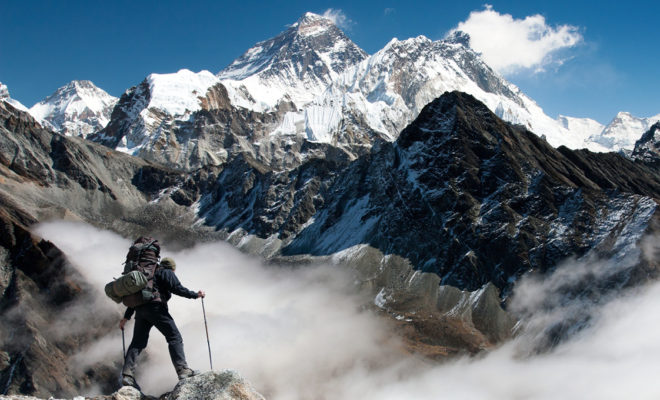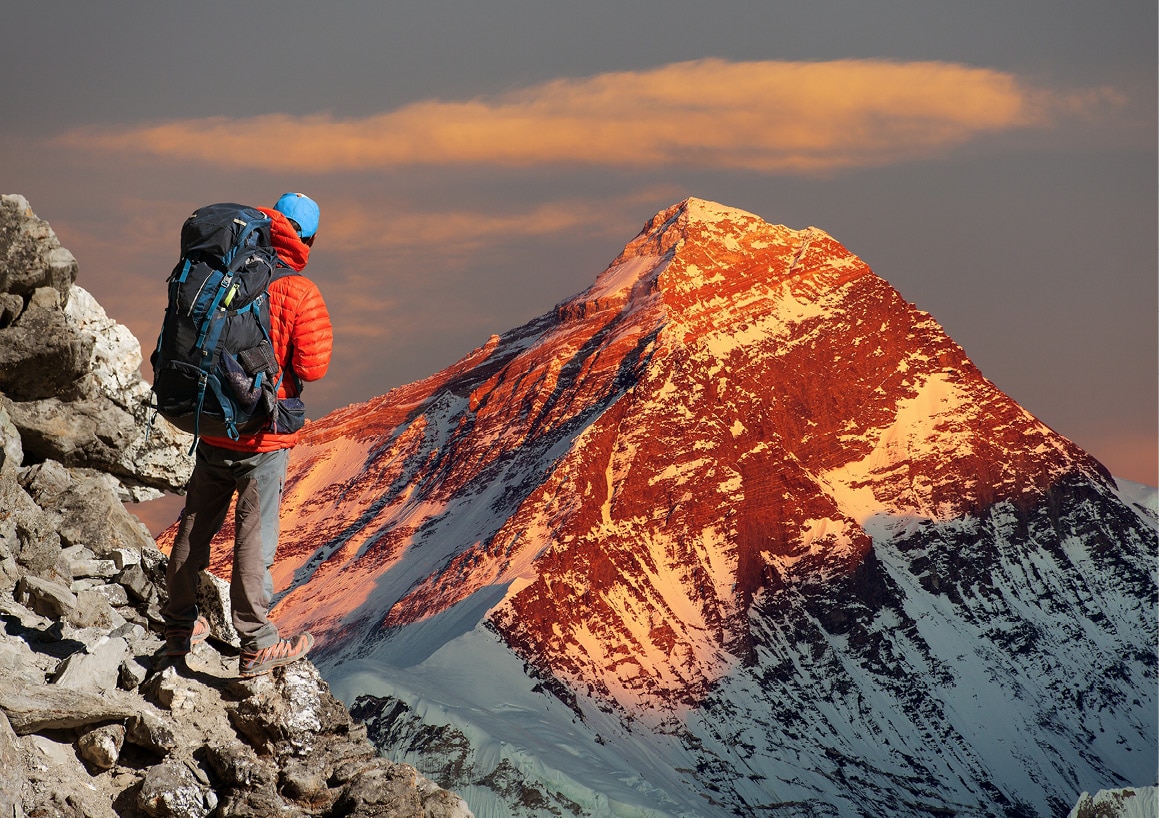Life
Time To Rename Mount Everest

Photo: Everest
One of the most frequently voiced arguments for retaining place names and memorials to colonial, unethical or destructive regimes is that their eradication equates to a denial of history.
In condemning the nomenclature of landmarks that pay homage to some of the more dishonourable legacies of human history, activists have managed to rectify many longstanding ills and blemishes on the world’s cultural landscape. In the United States, the statues of the Confederate leaders and slave owners have fallen; in South Africa, memorials to Apartheid’s leading advocates and abettors are being erased from streets and schools; in Italy, pressure is mounting to wipe the name Cadorna from the national memory; in Germany, the last vestigial traces of the Nazi Wehrmacht are being expunged with the removal of its leaders’ names from military barracks across the country.
Commendable as these triumphs may be, to date they have excluded the tallest remaining tribute to one of the most destructive regimes the world has ever known. Everest, the name pinned upon the world’s highest mountain, may not come down quite so easily as the statues of General Lee or take to renaming quite so flawlessly as a Durban high school or a Milan square, but as a first step, let’s begin the conversation.
The Naming of Everest
In 1852, Radhanath Sikhdar, an Indian mathematician working for the Great Trigonometrical Survey of India, discovered what he thought was the highest summit in the world after measuring his target from six different locations in North India. The peak was named Peak XV in accordance with the Survey’s practice of numerical identification.
In 1865, following confirmation of Peak XV’s status as the highest on the planet, the British decided to name it after Colonel George Everest, the Survey’s former leader, despite the fact that Everest had never set eyes on the mountain and had been a strict enforcer of the Survey’s policy of applying local names to significant landmarks, wherever possible. Chomolungma and Sagarmatha, the respective Tibetan and Nepalese names for the peak, were casually discounted and dismissed, with the Calcutta correspondent of The Times at the time declaring that the peak had “no name intelligible to civilised men.” Everest therefore it was.
Sagarmatha, however, was far from the first exotic mountain to be ladled with a European name, and certainly wouldn’t be the last. Before it, the highest mountain in Indonesia — known locally as Puncak Jaya — was named the Carstensz Pyramid after a Dutch explorer, who had seen it from his ship while making his way to Australia via New Guinea in 1623.
Then there is Too-man-i-goo-yah, otherwise known as Mount Whitney. The Sierra Nevada’s highest peak was stripped of its Paiute name in 1864, when members of the California Geological Survey named the mountain after Josiah Whitney, the State Geologist of California and benefactor of the survey. A little further north, we find a 14,410-foot peak curiously named after a British Naval officer who actually fought against the colonies in the American Revolution. Before this peculiar intervention, Washington’s Mount Rainier had been known as Talol, Tacoma, or Tahoma in the Lushootseed language spoken by the Puyallup people.
Back in the Himalayas, later colonialist or hegemonic name appropriations include K2 (previously known as Dapsang or Chogori), Broad Peak (Faichan Kangri until renamed in 1892 by the British explorer Martin Conway), and Island Peak (known as Imja Tse until its redesignation by English mountaineer Eric Shipton’s party in 1951). The list goes on….
There is, alas, something of a tradition in naming mountains after their region’s conquering, occupying White luminaries, blithely overlooking the original indigenous designations. In recent years, however, we have seen signs that the whitewash is starting to flake even in places where it has heretofore remained stubbornly intact.

Photo: Bigstock
Precedents — Is It Possible?
The most notable renaming of geographical landmarks in recent times has perhaps been that of another mountain, Alaska’s Mount Denali, the tallest peak in North America. First handed the moniker of Mount McKinley by a gold prospector in 1896, Denali had to wait until 2015 to have its Koyukon name restored by U.S. Pres. Barack Obama. The renaming remains a major victory for indigenous populations against the whitewashing of landmarks sacred to their people for centuries.
There is the old adage that victors write the history and, in turn, the toponyms that grace the features of the land over which they have prevailed. Consider the highest mountain in Europe outside the Russian Caucasus, known worldwide as Mont Blanc.
Though the name is French, the summit’s division between Italian and French territory would have made Monte Bianco an equally plausible and legitimate alternative had the Italians paid more attention to the mischievous erratum of a few rogue French cartographers in 1865 and then not shied away from the controversy of territorial division in the aftermath of World War II. As things happened, half a century passed before anyone contested the Gallic claim and the French name has stuck.
Likewise, the name Everest is now in its 153rd year. The alternatives, though well known, are not in wide usage. The undoing would be tricky and protracted, no doubt, but until the possibility is put on the table, justice and restoration of a more apt, native appellation is unlikely to occur.
Fifty years ago, it may have been difficult to imagine the renaming of Denali, or the application of the blue pencil to the numerous tips of the hat to the high priests of Apartheid in South Africa. But it happened. The confluence of socio-political forces with the efforts of a few conscientious souls inspired a collective mood of indignation and injustice at the enshrinement of historical atrocities and their perpetrators.
While some may lament the advent of political correctness, we would do well to remember that compared to the trends that have inspired its opposition — such as fascism, hate speech, homophobia, and misogyny, to name but a few — it is for the good. The past decades have not been without misadventures and reprehensible developments on the world’s political stage, but ridding our maps and cultural landscapes of their most opprobrious blemishes are not among them.

Why Rename?
When we think of the most tragic and deplorable events in world history, we tend to recall atrocities which condensed the greatest abomination into the shortest period of time. The Holocaust, the Holodomor in the Ukraine, the Battle of the Somme, the Vietnam War, and 9/11, all sadly meet these grisly and regrettable criteria. By some curious quirk of history, however, other atrocities have not drawn the same opprobrium. The British Raj in India was one such event.
In 1700, India was one of the richest countries in the world, accounting for 27 percent of global gross domestic product. By the time the British left in 1947 after two centuries of exploitation, famine, looting, massacres, and misgovernment, they had reduced it to one of the poorest.
Over the Raj’s 89-year reign in India, the total number of deaths caused either directly or indirectly by British occupation is estimated at 35 million people. (This number rises significantly if we take into account the deaths at the hands of the British East India Company, which spent more than two centuries establishing itself by brute force in South Asia before governance was transferred to the British crown in 1848.) Curious, then, that any of us should be willing to pay homage to such a regime.
George Everest may not have been directly responsible for any of those deaths, but his name stands as the emblem of a historical horror show that we should be loath to honor. That it grace our planet’s greatest natural monument is an affront not only to those who suffered as a result of British occupation in India, but to the humanity of any conscionable soul who objects to the subjugation of sovereign peoples and tyranny in any form.
Sagarmatha, like our planet’s other natural landmarks, is a part of our collective cultural heritage. As such, its nomenclature should be one that we can all stomach without qualms. That it lies in neighbouring Nepal matters little. We would not tolerate the name of one of the Fuhrer’s lesser henchmen atop the highest peak in Poland or Denmark. So why should we be willing to turn a blind eye to the naming after a servant to a regime as ruthless and unconscionable as the British Raj?
While the name Everest does not pay tribute to a man as odious as Hitler, it passively honors a regime and colonial power that was equally brutal in its treatment of a particular human demographic as the Third Reich.
Part of the problem, of course, is that the makers of history are those who do the winning. In the case of the British, they also renounced their hegemony and shuffled off quietly from their stately garden leaf empires, while conceitedly accepting plaudits for the decision to decamp (as opposed to fielding criticism for the damages done and having conquered in the first place).
Also, unlike the Third Reich, Khmer Rouge, and Mao Zedong, who left no legacy of value, the modernized infrastructures and democratic governance that British rule installed in India have, to a large extent, allowed the period of British occupation to enjoy more amiable portrayal around the myth of civilization-bringing. An element of foresight and humility might give us pause. One day, some rising star on the world stage might roll up in London or Washington or Paris and decide a moniker more befitting of landmarks, such as the Lincoln Memorial, Royal Exchange, and Arc de Triomphe.
The Denial of History?
One of the most frequently voiced arguments for retaining place names and memorials to colonial, unethical or destructive regimes is that their eradication equates to a denial of history. A warts and all approach, some claim, is the only means of reminding ourselves of the ills perpetrated over the years so that they might never be repeated. It’s an argument akin to maintaining a small portion of your cancer as a reminder of things before convalescence.
But remembrance is one thing; celebration, consecration and enshrinement quite another. The effects of the rule of the British East India Company and the Raj remained evident and visible throughout India for decades after the Raj’s departure. To this day, in ways that were not and cannot be so easily dismantled, widespread poverty, famine, class division, and a colossal gap between rich and poor afflict the land.
There’s no need for the name of one of that regime’s dignitaries to rest atop the continent’s greatest landmark to remind anyone of the ills visited there. Renaming Everest would not be a denial of history, but instead represent a first step in undoing the denial that has existed thus far. It would also serve as a timely counterweight and coup for that conscientious demographic keen to excoriate the shameful deeds of our ancestors at a time when politicians appear to be hell-bent on repeating them— and thus lay a benchmark for what will be deemed unacceptable of our contemporaries.

You must be logged in to post a comment Login